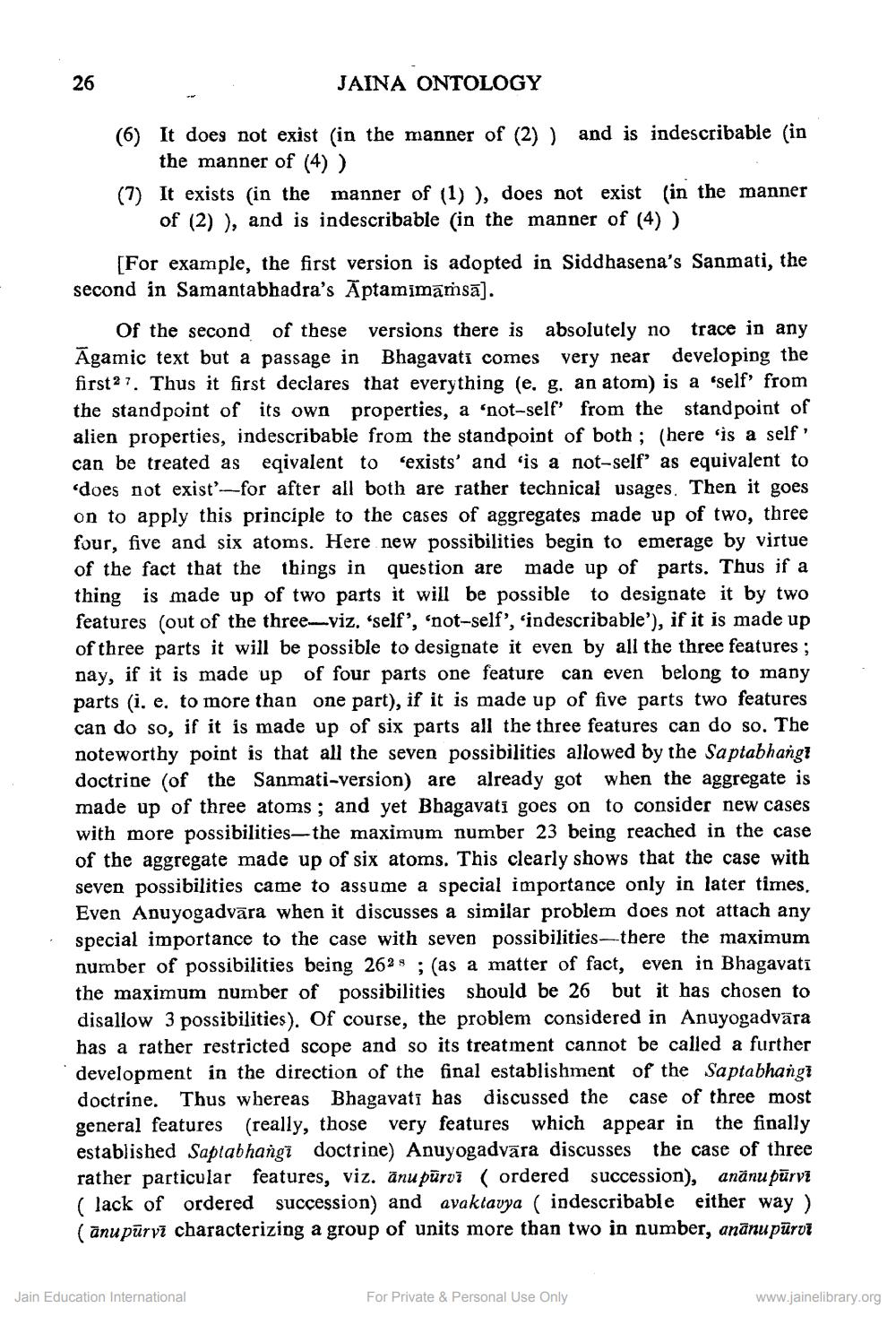________________
26
-
JAINA ONTOLOGY (6) It does not exist (in the manner of (2) ) and is indescribable in
the manner of (4) ) (7) It exists in the manner of (1) ), does not exist in the manner
of (2) ), and is indescribable in the manner of (4) )
[For example, the first version is adopted in Siddhasena's Sanmati, the second in Samantabhadra's Aptamimamsā).
of the second of these versions there is absolutely no trace in any Agamic text but a passage in Bhagavati comes very near developing the first 2 7. Thus it first declares that everything (e. g. an atom) is a 'self' from the standpoint of its own properties, a 'not-self' from the standpoint of alien properties, indescribable from the standpoint of both; (here is a self' can be treated as eqivalent to 'exists' and 'is a not-self' as equivalent to 'does not exist-for after all both are rather technical usages. Then it goes on to apply this principle to the cases of aggregates made up of two, three four, five and six atoms. Here new possibilities begin to emerage by virtue of the fact that the things in question are made up of parts. Thus if a thing is made up of two parts it will be possible to designate it by two features (out of the three-yiz. 'self', 'not-self', 'indescribable'), if it is made up of three parts it will be possible to designate it even by all the three features ; nay, if it is made up of four parts one feature can even belong to many parts (i, e, to more than one part), if it is made up of five parts two features can do so, if it is made up of six parts all the three features can do so. The noteworthy point is that all the seven possibilities allowed by the Saptabhangi doctrine of the Sanmati-version) are already got when the aggregate is made up of three atoms; and yet Bhagavati goes on to consider new cases with more possibilities, the maximum number 23 being reached in the case of the aggregate made up of six atoms. This clearly shows that the case with seven possibilities came to assume a special importance only in later times, Even Anuyogadvāra when it discusses a similar problem does not attach any special importance to the case with seven possibilities--there the maximum number of possibilities being 2629 ; (as a matter of fact, even in Bhagavati the maximum number of possibilities should be 26 but it has chosen to disallow 3 possibilities). Of course, the problem considered in Anuyogadvāra has a rather restricted scope and so its treatment cannot be called a further development in the direction of the final establishment of the Saptabhangi doctrine. Thus whereas Bhagavati has discussed the case of three most general features (really, those very features which appear in the finally established Saptabhangi doctrine) Anuyogadvāra discusses the case of three rather particular features, viz. ānu pūrvi ( ordered succession), anānu pūrvi ( lack of ordered succession) and avakiavya ( indescribable either way ) (anu purvī characterizing a group of units more than two in number, anānu pūrvi
Jain Education International
For Private & Personal Use Only
www.jainelibrary.org




